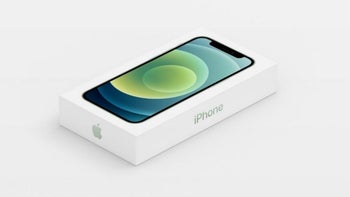How iPhone users on Verizon can know whether they are on low-band or high-band 5G airwaves

On Tuesday, Verizon introduced its nationwide 5G network. The nation's largest carrier already has its fast Ultra Wideband service powered by high-band mmWave spectrum. The problem with mmWave is that the signals don't travel far and can't penetrate structures that well. But what they can do is deliver zippy fast download data speeds. Meanwhile, T-Mobile and AT&T have been able to deliver coast-to-coast nationwide 5G thanks to low-band spectrum. For example, T-Mobile's 600MHz signals travel far but do not offer the data speeds that mmWave does.
- iPhone 13: price, release date, features, and specs
How Verizon customers know whether their iPhone is connected to low-band or high-band 5G
To get its coast-to-coast 5G network up and running, Verizon has turned to dynamic spectrum sharing (DSS) that allows it to deliver low-band 5G service on a nationwide basis. So when a customer is able to access its superfast Ultra Wideband signal in the 28 GHz or 39 GHz range, they will be able to receive zippy 5G service with high capacity and low latency. If they can't connect to a mmWave signal (currently in 55 cities and should be in 60 by the end of this year), the DSS technology will move the connection to low-band 5G in the 850MHz range. And if that connection doesn't stick, the phone will work with 4G LTE. The gear for DSS is manufactured by Ericsson, Nokia, and Samsung.
Here it is! The new iPhone 12 Pro with 5G meets Verizon 5G. #5GJustGotReal
— Verizon (@Verizon) October 16, 2020
Preorder now: https://t.co/2myWyeQxR4pic.twitter.com/soP4FhjCC3
Mark Lowenstein, managing director of Mobile Ecosystem says that "The iPhone 12 will sing when in a good mmWave coverage area, but we estimate that for the time being this will be in a very small fraction of places that people will be. If you were to think about everybody in the U.S. using their iPhone RIGHT NOW (not in Wi-Fi), about 1% of those sessions would get the best 5G speeds (1 GB or better)."
Lowenstein said he expects the speed in Verizon's DSS locations to be more of a 4G+ experience; in other words, it would be faster than LTE but not as fast as T-Mobile's 2.5 GHz mid-band service, or T-Mobile's combined 600MHz and 2.5GHz service. T-Mobile acquired the 2.5GHz spectrum from Sprint as part of the merger between the two.
Lowenstein said he expects the speed in Verizon's DSS locations to be more of a 4G+ experience; in other words, it would be faster than LTE but not as fast as T-Mobile's 2.5 GHz mid-band service, or T-Mobile's combined 600MHz and 2.5GHz service. T-Mobile acquired the 2.5GHz spectrum from Sprint as part of the merger between the two.
All four Apple iPhone 12 models in the U.S. will be compatible with both sub 6-GHz 5G signals and the fast mmWave spectrum. So if you own an iPhone 12 model on Verizon, is there a way to determine which 5G band you're on? Thanks to new commercials starring comedian Chris Rock that Verizon put into rotation yesterday, we can see that whenever an iPhone 12 series phone is connected to Verizon's UltraWide band, on the status bar you will see the letter's UW stacked vertically. On the other hand, if you're on Verizon's nationwide DSS 5G network, you'll see just the 5G logo.
Verizon is displaying the two different logos so that its customers don't get confused between the low-band 5G signals and the high-band signals. Thanks to a little trick called carrier aggregation, which combines as many as eight channels, Verizon is reportedly delivering 5G data speeds as fast as 4Gbps.
Verizon CEO Hans Vestberg made an appearance during Apple's "Hi, Speed" event standing apart from Apple CEO Tim Cook to maintain social distancing. Heidi Hemmer, VP of Technology at Verizon, said that third-party firms rank Verizon's 4G LTE network faster than some rivals' 5G networks. Talking about the DSS powered 5G low-band service, the executive says that Verizon has plenty of capacity to handle all of the new iPhone models that will be joining its network very shortly.
Consumers switching to Verizon will be eligible to receive a free iPhone 12 under certain circumstances. Existing customers can pay as little as $15 a month for an iPhone 12 using a device payment plan and a select unlimited plan.










Things that are NOT allowed: